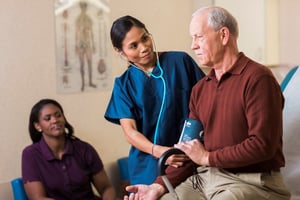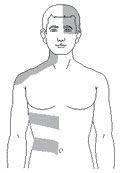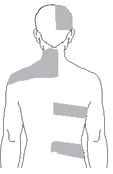Home Care Expert Insider Blog
- Home
- Home Care Expert Insider Blog
Shingles and Home Care
- Home
- Home Care Expert Insider Blog
- Shingles and Home Care
6 minute read

Nearly one million people every year develop shingles in the United States, and about half of those cases occur in men and women over the age of 60. Shingles is not only a painful skin condition, but some cases of shingles potentially have serious long-term effects. Depending on the location and severity of the outbreak, shingles sufferers can develop lingering and severe nerve pain, painful eye infections, and in some cases, vision impairment. Shingles patients have a higher risk of stroke during the first six months after the appearance of symptoms, especially if they are immune-suppressed due to another condition. More commonly, shingles can cause hearing and balance problems.
According to the Center for Disease Control (CDC), the shingles vaccine can greatly reduce the chance of developing shingles or at least reduce the severity of symptoms should shingles appear. Early intervention is crucial, and for seniors living independently or aging in place, the presence of a one-on-one caregiver who is alert to the initial symptoms of shingles can really make a difference.
What Exactly Is Shingles?
Shingles are caused by the chickenpox virus (varicella-zoster), characteristically affecting only one side of the body. According to the Center for Disease Control, shingles usually develop in three phases: severe pain or tingling on or under the skin, an itchy rash, and finally, blisters that resemble chickenpox. Before the rash develops, people often have pain, itching, or tingling in the area where the rash will develop. This may happen anywhere from 1 to 5 days before the rash appears. Shingles can occur spontaneously but may be provoked by stress, fever, radiation therapy, or immunosuppression.

 Most commonly, the rash occurs in a single stripe around either the left or the right side of the body. In other cases, the rash occurs on one side of the face. In rare cases (usually among people with weakened immune systems), the rash may be more widespread and look similar to a chickenpox rash. Shingles can affect the eye and cause loss of vision.
Most commonly, the rash occurs in a single stripe around either the left or the right side of the body. In other cases, the rash occurs on one side of the face. In rare cases (usually among people with weakened immune systems), the rash may be more widespread and look similar to a chickenpox rash. Shingles can affect the eye and cause loss of vision.
Other symptoms of shingles can include
- Fever
- Headache
- Chills
- Upset stomach
The rash consists of blisters that typically scab over in 7 to 10 days and usually clear up within 2 to 4 weeks.
Who Is At Risk?
Shingles is a reactivation of the varicella-zoster virus. After a case of chickenpox, this virus lingers dormant in the body for life, even if the chickenpox occurred in a senior's youth. Before the chickenpox vaccine was widely used, almost 90% of children in the US contracted chickenpox. Because the vaccine wasn't licensed for use until 1995, only 10% of today’s population over 60 has managed to never contract chickenpox, and therefore are not at risk of shingles. 20% of everyone who has had chickenpox is likely to contract shingles at some point. Per the National Institutes of Health, 50% of all Americans will have had shingles by the time they are 80. The aging process increases risk, because the strength of our immune system gradually declines, and loses its ability to ward off infection. The dormant shingles virus can take this opportunity to become active.
Why Is The Vaccine Recommended?
The pain of shingles can be excruciating. Even once the rash heals, severe and long-term post-herpetic neuralgia pain can persist. This lasting pain is a common symptom after-effect in people over 60. When the rash starts on the face or eyes, it can cause vision or hearing problems to the point of permanent blindness if the cornea of the eye is affected. If the open sores aren’t cared for properly, bacterial infection can result, leading to scarring and other complications. Immune-deficient patients can also experience a more extensive than usual spread of the rash. Most commonly, the combination of pain and sleeplessness is cause for the inability to performing basic activities of daily life, which can lead to depression. According to the CDC, research has found that for those 60 and over, the vaccine reduced the incidence of shingles by about half. For those between 60 and 69, it reduced incidence by 64%. The CDC now recommends the zoster vaccine, Shingrix, for adults 60 and older, even if they’ve had shingles already.
What Should Caregivers Know?
Shingles cannot be passed from one person to another. However, the virus that causes shingles, the varicella-zoster virus, can spread from a person with active shingles to cause chickenpox in someone who had never had chickenpox or received the chickenpox vaccine.
A person with active shingles can spread the virus when the rash is in the blister phase. A person is not infectious before the blisters appear. The virus is spread through direct contact with fluid from the rash blisters caused by shingles. Once the rash has developed crusts, the person is no longer infectious.
Shingles are less contagious than chickenpox and the risk of a person with shingles spreading the virus is low if the rash is covered.
If you have shingles, you should:
- Cover the rash.
- Avoid touching or scratching the rash.
- Wash your hands often to prevent the spread of varicella-zoster virus.
- Avoid contact with the people below until your rash has developed crusts
- pregnant women who have never had chickenpox or the chickenpox vaccine;
- premature or low birth weight infants; and
- people with weakened immune systems, such as people receiving immunosuppressive medications or undergoing chemotherapy, organ transplant recipients, and people with human immunodeficiency virus (HIV) infection.
Home Care
Early detection of any skin rash that may be shingles is crucial. The regular presence of a caregiver providing dedicated, one-on-one care for a senior may help identify any suspicious rashes that a senior may have overlooked and quickly bring that to the attention of the family and healthcare provider. The sooner someone is diagnosed, the sooner anti-viral medications can be administered, lessening the severity. If diagnosed within 72 hours of the first sign of the rash, chances are better for a quick recovery and less residual pain.
A caregiver can also help ensure a senior is bathing daily and properly caring for any open blisters that may appear. High levels of personal hygiene help prevent bacterial infections of sores, preventing further complications and unnecessary scarring. A caregiver can also help keep fingernails trimmed and clean to help curb scratching of blisters and possible infection.
The simple act of caregiver/client socialization can help ease restlessness and agitation and prevent depression and anxiety. Too often during a health crisis, seniors are unable to perform activities of daily living (ADL's) which can easily lead to depression and a negative outlook on life. Having a smiling face, helpful hands, and the encouraging words of a dedicated home caregiver can help a senior stay focused on recovery instead of wallowing in the symptoms.
Outside of caring for someone suffering from shingles, having dedicated senior care provides a multitude of benefits, especially when brought in early. Many times families wait for a medical emergency to prompt them to seek home care for an aging parent or loved one. I cannot stress how beneficial it is to engage a home caregiver at the first sign of declining abilities, even if it's just a few hours a week at the onset. Home care is preventative care. A home caregiver is a partner and can help a senior stay safe, healthy, and happy in the comfort of home for significantly longer than the "wait and see" approach.
